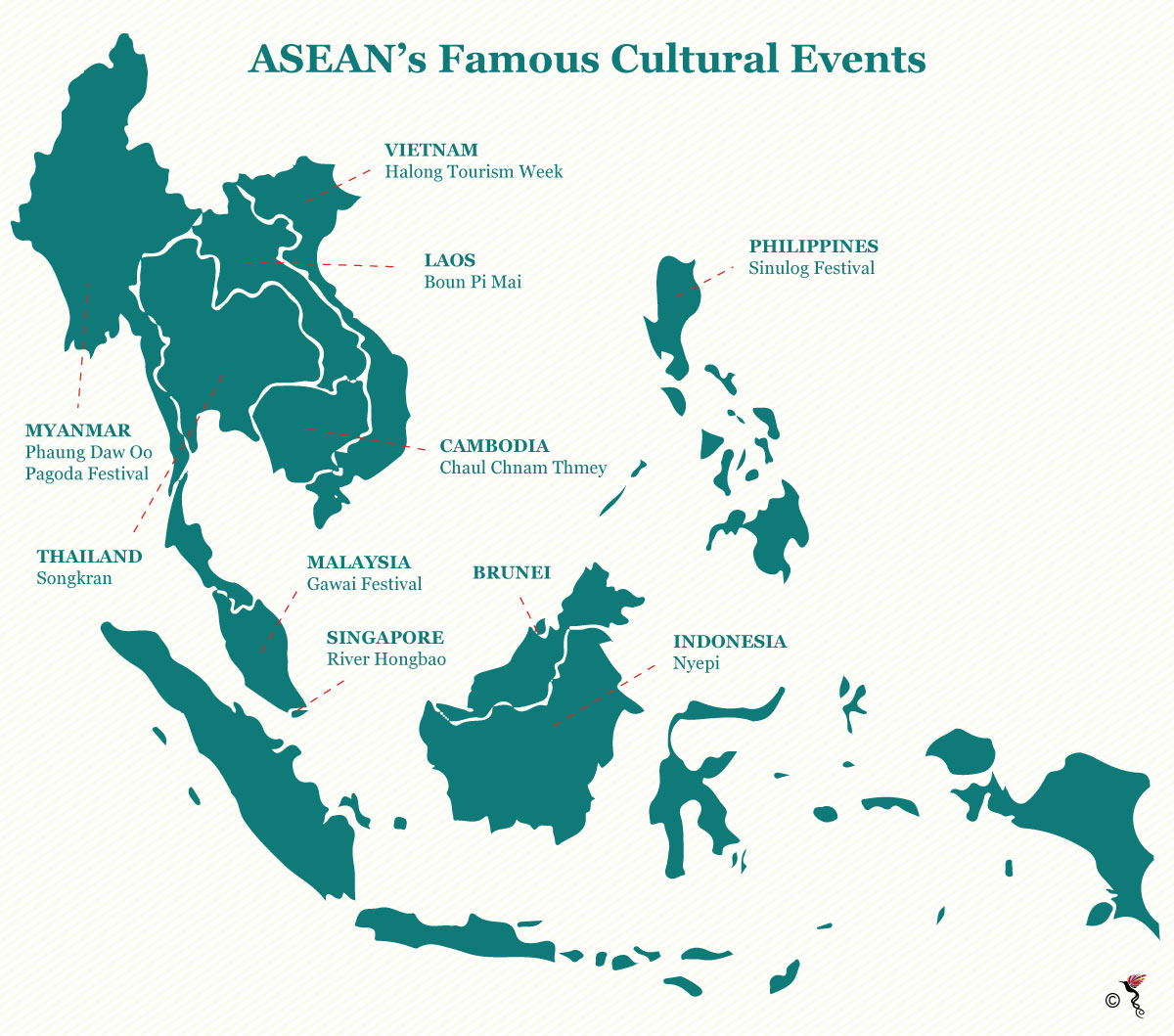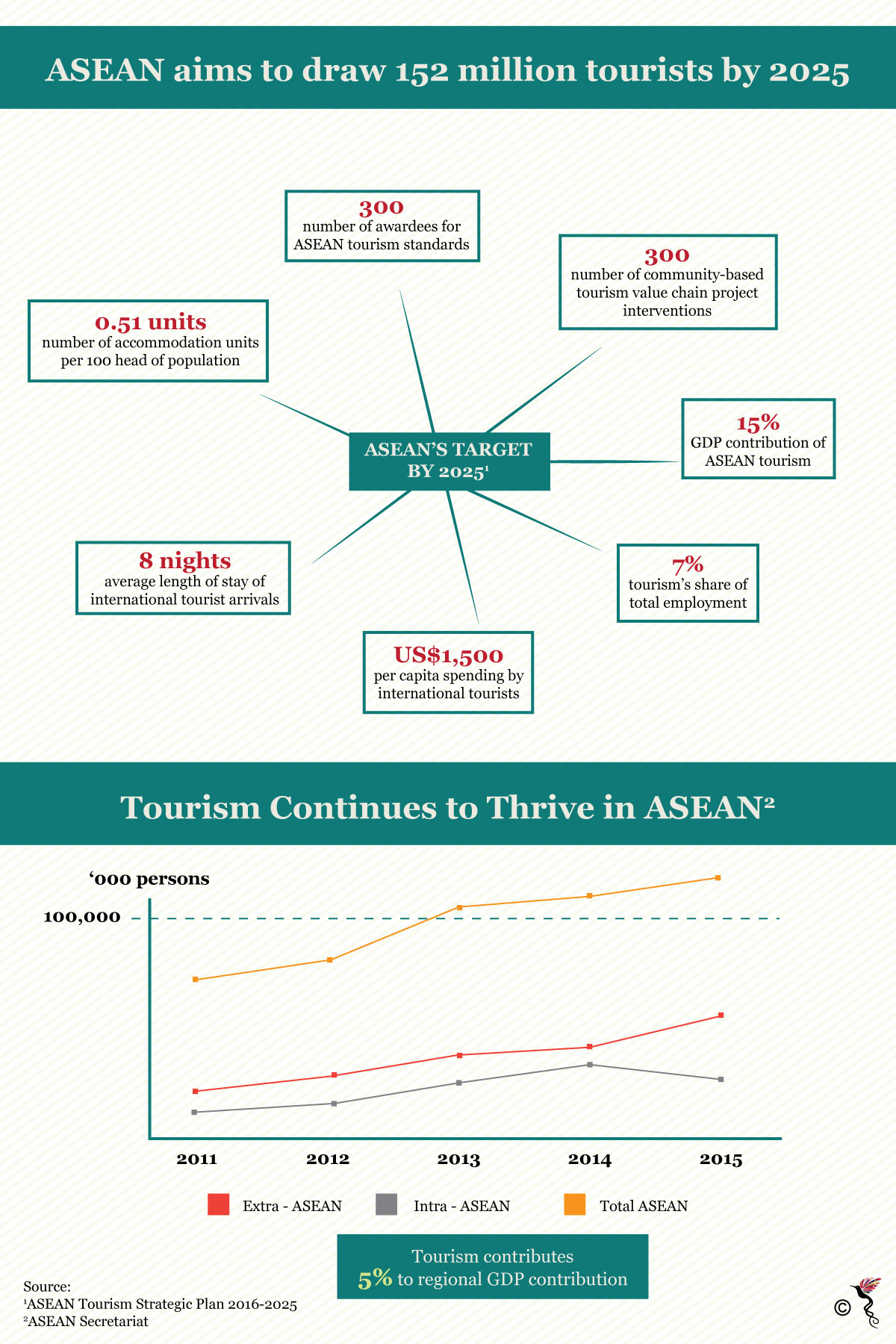Naturally blessed with a rich and diverse cultural heritage, Southeast Asia attracts a huge amount of tourists to the region every year. Its cultural heritage is manifested through a wealth of ancient monuments, heritage sites, colourful festivals and exotic cuisines which have become major tourist attractions for travellers who are seeking for a unique cultural experience. Southeast Asia's festivals and cultural celebrations have become ASEAN’s (Association of Southeast Asian Nations) greatest asset in terms of tourism.
These cultural celebrations are a clear example of how the Southeast Asian nations and its communities value their heritage which also become an important factor in driving the tourism sector in the region.

Examples of cultural events that draw tourists to Southeast Asia.
ASEAN tourism proven resilient
ASEAN’s tourism sector has proven to be resilient in the face of the continuing challenging economic climate. Due to its contribution to the region's economy, the tourism sector has been selected as one of the priority sector under the AEC (ASEAN Economic Community). The region attracts over 100 million tourists each year, contributing five percent to its GDP (gross domestic product) in 2016. ASEAN aims to increase the GDP contribution to 15 percent by 2025. The regional bloc’s commitment on sustainability and inclusivity is reaffirmed in the ASEAN Tourism Strategic Plan 2016-2025 which aims to achieve “quality tourism destination offering a unique, diverse ASEAN experience, and will be committed to responsible, sustainable, inclusive and balanced tourism development, so as to contribute significantly to the socioeconomic well-being of ASEAN people” by 2025.
As the regional bloc desires to develop the tourism sector further, it should also consider the importance of preserving the region's cultural heritage.
When speaking at the recent ASEAN Tourism Forum, Singapore's Prime Minister Lee Hsien Loong said, “tourism is one area where by working together, we can get win-win benefits, growing our economies, creating jobs, and drawing our peoples together. There is huge potential in tourism. Because ASEAN countries have fast growing middle classes, and as our people become better off (and) more affluent, more of them want to travel to see the world. At the same time, ASEAN itself offers an enormous richness of attractions. That is why tourists from around the world want to visit Southeast Asia.”

ASEAN’s goals for the tourism sector.
According to the ASEAN Secretariat, over 75 percent of international tourist arrivals in the ASEAN region came from Asian countries – more than half of them were intra-ASEAN travellers. The emergence of low-cost carriers in the region has also boosted the tourism sector as air travels become more affordable for the growing middle-class population. The increase of the middle-class population within the different ASEAN economies in the region has also contributed to the increase of disposable income which many have chosen to spend on travelling.
With its variety of cultural celebrations, coupled with strategic regional support in terms of policies and infrastructure investments, ASEAN is set to embark on a journey to boost its tourism sector which allow all 10 member states to capitalise on increase of tourist arrivals in the region.
